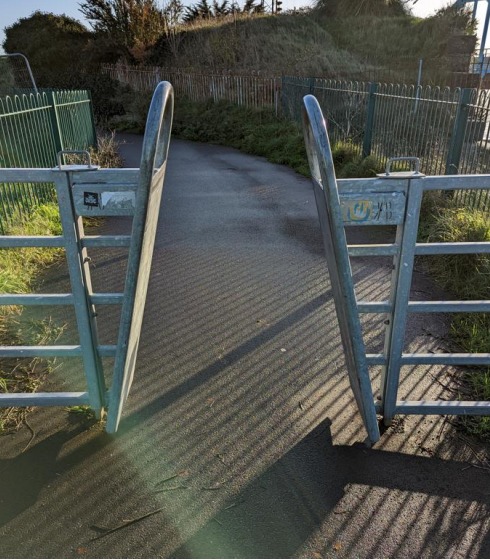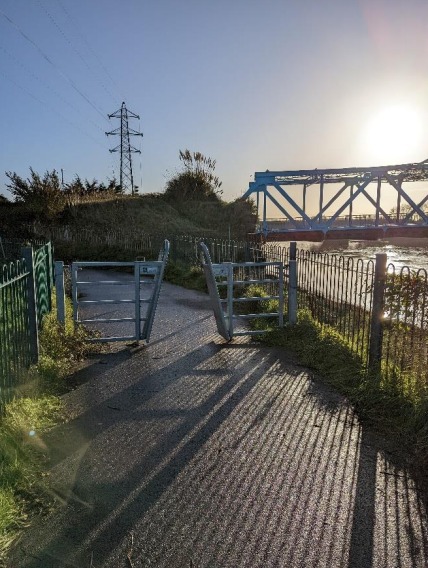FLINTSHIRE Council is looking to make the coastal path more accessible to those with mobility issues, without opening it up to illegal bikes and vehicles.
The authority’s environment and economy scrutiny committee is to consider proposed changes to some of the barriers along the Flintshire stretch of the Wales Coastal Path when it meets next week.
In Flintshire the coastal path extends from the border with Chester in the southeast along the northern bank of the River Dee, before crossing the River Dee using the Jubilee Lift Bridge (commonly known as the Blue Bridge) in Garden City.
It then runs along the south side of the River Dee, passing through Shotton, Connah’s Quay, Flint, Bagillt, Holywell and Mostyn before reaching Talacre. The route passes along the coastline with the Irish Sea before passing into Denbighshire between Talacre and Prestatyn.
The section being looked at is between the Jubilee Lift Bridge in Garden City, and the Wales/England border.
A report to councillors states A-Frame and Chicane barriers were installed along the path in 2006 to minimise illegal access opportunities, and while the barriers have been effective at reducing this it has not been prevented entirely.
It says: “The area under review has long been an active route for walking and cycling journeys, however the path has also in the past experienced issues as a result of illegal vehicle types (such as motorcycles / dirt bikes) gaining access to the path and thereby posing a safety risk to legitimate pedestrian and cycle users.
“As a result of this, several access control measures were installed along the path to restrict access to the path for illegal users such as motorcycles, to ensure the safety of legitimate users of the path, and in order to maintain the attractiveness of the route as a walking and cycling facility.
“The barriers are designed to be passable by as many legitimate user types as possible (including Class 2 mobility scooters), whilst prohibiting access to larger vehicles.
“Disabled access to the countryside has increased over the last few years, partly due to the availability of mobility aids suited to off road environments. Often the size of these aids is larger than the standard classes of mobility scooter and concerns have been raised by user groups relating to the current access control measures along the coast.
“The Equality Act 2010 provides legal protection to people from discrimination based on a range of characteristics including disability, age, race, sexual orientation.”

The report adds: “The Act requires service providers to make reasonable adjustments for disabled persons so as they are not disadvantaged either directly or indirectly from using services and facilities when compared to those without disabilities.
“It is important to note that improving access for all legitimate users of the path will necessitate the widening of existing openings at access control locations, which in turn reduces the effectiveness of the access control measure in preventing illegal access.
“As such, it will not be possible for access for all legitimate users to be improved entirely whilst still retaining the same level of access control to prevent use for vehicles such as cars and motorcycles.”
The council has appointed engineering consultants Pell Frischmann (PF) to undertake a review of the existing access control measures in place on a section of the Wales Coast Path (WCP) between Chester and Queensferry.
They have assessed the barriers currently in place and recommended two options as potential alternatives which are;
A frame – upgrade this barrier to a Radar Lock Gated A Frame Barrier.
This would offer a cost-effective solution with the potential for improved accessibility by legitimate users holding a radar key (which are readily available online) whilst still maintaining an effective deterrent to illegal vehicle ingress.
Chicane – It is recommended that the existing chicane barriers are replaced by a staggered gates solution.
This would retain the existing level of permeability for legitimate users (which could be enhanced should the gates be fitted with radar locks which could be opened as required) and would retain the existing level of deterrent to illegal vehicle access.
The council’s environment and economy scrutiny committee meets on Tuesday (July 11) to discuss the proposals.



















